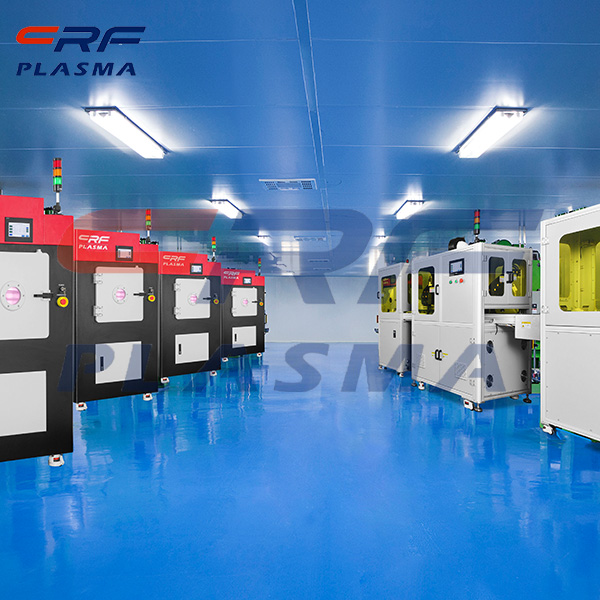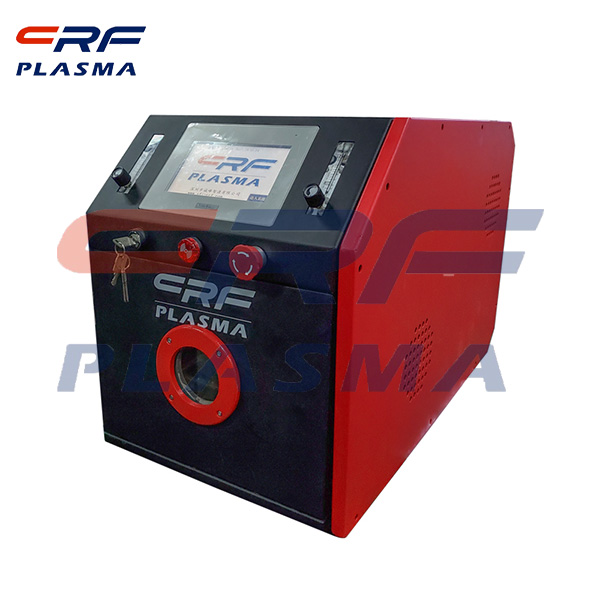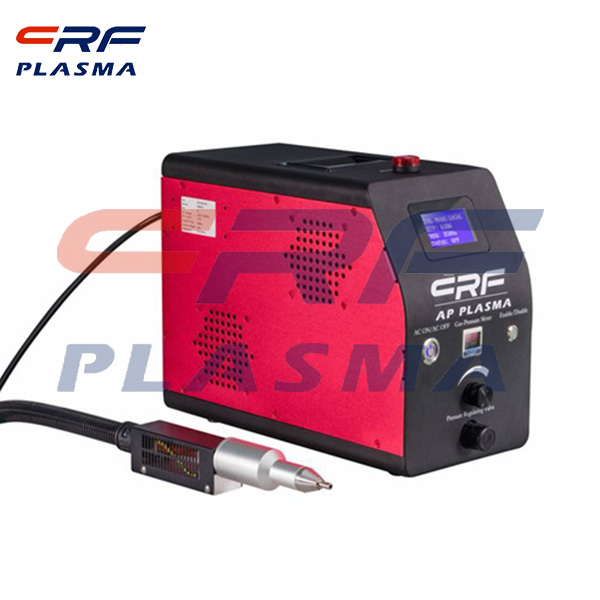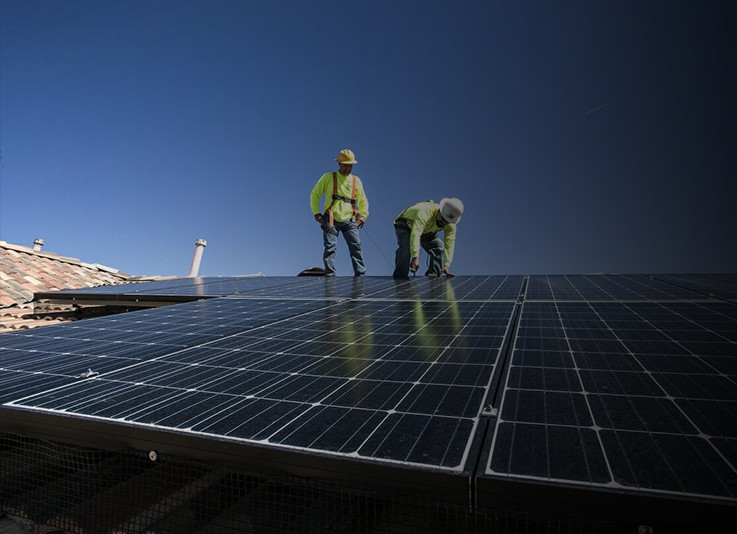
Welcome to Shenzhen Sing Fung Intelligent Manufacturing Co., Ltd.
E-mail:shaobo@sfi-crf.com
Plasma etching contact hole
- Categories:Industry News
- Author:plasma cleaning machine-surface treatment equipment-CRF plasma machine-Sing Fung Intelligent Manufacturing
- Origin:
- Time of issue:2020-11-16
- Views:
(Summary description)The contact hole plays an important role in the manufacturing of integrated circuit, connecting the front part and the back part of the metal interconnection. Due to the contact hole layer plays the key role in integrated circuits, in the contact hole plasma etching process, technology integration for key contact hole size, size uniformity, contact hole wall shape control, as well as the contact hole plasma etching process selectivity of the etch stop layer, the consumption of metal silicides, contact hole height uniformity and ensure contact hole opened all the requirements of more and more strict, especially for the improvement of yield is becoming more and more important. In the Contact hole technology integrated development course, two important milestone is 65 nm node start using NiSi (metal nickel silicide) instead of before CoSi (cobalt metal silicides) as the Contact metal in order to reduce the Contact resistance, reduce the signal delay, and node from 45 nm technology began to use the high stress of silicon nitride material to improve the performance of the device and as a Contact hole Etch Stop Layer (Contact Etch Stop Layer, CESL). With the development of contact hole etching technology, the 65nm/55nm technology nodes were all silicon oxide etching with photoresist mask before, the step sequence of contact hole etching at 90nm is to remove the photoresist first and then open the contact hole stop layer, while the step sequence of contact hole stop layer is to use the first etching to remove the photoresist at 65nm/55nm. Due to the key size requirements of 90nm and 65nm/55nm devices, there is little need for etching process to shrink the size of contact holes. When the key size of the logic circuit is reduced to 45nm/40nm and more advanced process technology nodes, due to the limitations of lithography, process integration usually requires the key size after contact hole etching to be reduced by about 40nm(dimension deviation) compared to the pre-etching size, and multi-layer mask etching technique is started. Such a large reduction in size in the contact hole etching process presents a challenge to ensure the opening of the contact hole in the case of high aspect ratio. The size deviation is usually achieved mainly through the polymer rich etching process. However, the polymer-rich etching process tends to reduce the process window to ensure good opening of contact holes, control the shape of side wall of contact holes with high aspect ratio and good size uniformity, all of which are exactly the requirements of the etching process proposed by the process integration to achieve more stringent electrical characteristics. In addition, lithography requires thinner and less undeveloped photoresist for graphic exposure. These requirements increase the selectivity of contact hole etching for photoresist, so as to prevent the roundness of contact hole from becoming worse. Therefore, in order to better transfer graphics, 45nm/40nm began to use multi-layer mask technology of Organic spin coating (Organic under Layer, Si BARC and photoresist in order from bottom to top). When it develops to the 28NM technology, I begin to use the multi-layer mask technology of advanced graphic material (Amorphous Carbon), Hard mask anti-reflection layer (DARC) and Photoresist from the bottom to the top). Among them, organic spin-coated multi-layer mask technology USES spin-coated hydrocarbon polymers and organic material anti-reflection layer is silicon-based hydrocarbon polymers. Both of them are liquid and need to be baked into solid mask at low temperature, so they are called soft mask technology, which is integrated on the photolithography machine and has a very fast process. The advanced graphic material multi-layer mask is the chemical vapor deposition of advanced graphic material (amorphous carbon film) and dielectric material (such as silicon nitrous oxide) film as the anti-reflection layer, so it is also called hard mask technology. Because of the hard mask technology used in the nitrogen oxide silicon material thickness is very thin, soft mask technology is just the thickness of the organic material anti reflector l / 2 or a third, because of this, for passing graphic required for the thickness of photoresist can also be greatly reduced, so that you can significantly increases the graphic show shadow precision of lithography process, to reduce the noise influence and improve safety process window; At the same time, advanced graphics material mask layer technology also has a higher ability of contact hole size shrinkage and make different contact hole roundness, thus, advanced graphics multi-layer mask technology can better transfer graphics, it has excellent process integration process window, are widely used in the forefront of logic integrated circuit manufacturing process.
Plasma etching contact hole
(Summary description)The contact hole plays an important role in the manufacturing of integrated circuit, connecting the front part and the back part of the metal interconnection. Due to the contact hole layer plays the key role in integrated circuits, in the contact hole plasma etching process, technology integration for key contact hole size, size uniformity, contact hole wall shape control, as well as the contact hole plasma etching process selectivity of the etch stop layer, the consumption of metal silicides, contact hole height uniformity and ensure contact hole opened all the requirements of more and more strict, especially for the improvement of yield is becoming more and more important.
In the Contact hole technology integrated development course, two important milestone is 65 nm node start using NiSi (metal nickel silicide) instead of before CoSi (cobalt metal silicides) as the Contact metal in order to reduce the Contact resistance, reduce the signal delay, and node from 45 nm technology began to use the high stress of silicon nitride material to improve the performance of the device and as a Contact hole Etch Stop Layer (Contact Etch Stop Layer, CESL). With the development of contact hole etching technology, the 65nm/55nm technology nodes were all silicon oxide etching with photoresist mask before, the step sequence of contact hole etching at 90nm is to remove the photoresist first and then open the contact hole stop layer, while the step sequence of contact hole stop layer is to use the first etching to remove the photoresist at 65nm/55nm. Due to the key size requirements of 90nm and 65nm/55nm devices, there is little need for etching process to shrink the size of contact holes.
When the key size of the logic circuit is reduced to 45nm/40nm and more advanced process technology nodes, due to the limitations of lithography, process integration usually requires the key size after contact hole etching to be reduced by about 40nm(dimension deviation) compared to the pre-etching size, and multi-layer mask etching technique is started. Such a large reduction in size in the contact hole etching process presents a challenge to ensure the opening of the contact hole in the case of high aspect ratio. The size deviation is usually achieved mainly through the polymer rich etching process. However, the polymer-rich etching process tends to reduce the process window to ensure good opening of contact holes, control the shape of side wall of contact holes with high aspect ratio and good size uniformity, all of which are exactly the requirements of the etching process proposed by the process integration to achieve more stringent electrical characteristics. In addition, lithography requires thinner and less undeveloped photoresist for graphic exposure. These requirements increase the selectivity of contact hole etching for photoresist, so as to prevent the roundness of contact hole from becoming worse.
Therefore, in order to better transfer graphics, 45nm/40nm began to use multi-layer mask technology of Organic spin coating (Organic under Layer, Si BARC and photoresist in order from bottom to top). When it develops to the 28NM technology, I begin to use the multi-layer mask technology of advanced graphic material (Amorphous Carbon), Hard mask anti-reflection layer (DARC) and Photoresist from the bottom to the top). Among them, organic spin-coated multi-layer mask technology USES spin-coated hydrocarbon polymers and organic material anti-reflection layer is silicon-based hydrocarbon polymers. Both of them are liquid and need to be baked into solid mask at low temperature, so they are called soft mask technology, which is integrated on the photolithography machine and has a very fast process. The advanced graphic material multi-layer mask is the chemical vapor deposition of advanced graphic material (amorphous carbon film) and dielectric material (such as silicon nitrous oxide) film as the anti-reflection layer, so it is also called hard mask technology. Because of the hard mask technology used in the nitrogen oxide silicon material thickness is very thin, soft mask technology is just the thickness of the organic material anti reflector l / 2 or a third, because of this, for passing graphic required for the thickness of photoresist can also be greatly reduced, so that you can significantly increases the graphic show shadow precision of lithography process, to reduce the noise influence and improve safety process window; At the same time, advanced graphics material mask layer technology also has a higher ability of contact hole size shrinkage and make different contact hole roundness, thus, advanced graphics multi-layer mask technology can better transfer graphics, it has excellent process integration process window, are widely used in the forefront of logic integrated circuit manufacturing process.
- Categories:Industry News
- Author:plasma cleaning machine-surface treatment equipment-CRF plasma machine-Sing Fung Intelligent Manufacturing
- Origin:
- Time of issue:2020-11-16 09:16
- Views:
Plasma etching contact hole:
The contact hole plays an important role in the manufacturing of integrated circuit, connecting the front part and the back part of the metal interconnection. Due to the contact hole layer plays the key role in integrated circuits, in the contact hole plasma etching process, technology integration for key contact hole size, size uniformity, contact hole wall shape control, as well as the contact hole plasma etching process selectivity of the etch stop layer, the consumption of metal silicides, contact hole height uniformity and ensure contact hole opened all the requirements of more and more strict, especially for the improvement of yield is becoming more and more important.
In the Contact hole technology integrated development course, two important milestone is 65 nm node start using NiSi (metal nickel silicide) instead of before CoSi (cobalt metal silicides) as the Contact metal in order to reduce the Contact resistance, reduce the signal delay, and node from 45 nm technology began to use the high stress of silicon nitride material to improve the performance of the device and as a Contact hole Etch Stop Layer (Contact Etch Stop Layer, CESL). With the development of contact hole etching technology, the 65nm/55nm technology nodes were all silicon oxide etching with photoresist mask before, the step sequence of contact hole etching at 90nm is to remove the photoresist first and then open the contact hole stop layer, while the step sequence of contact hole stop layer is to use the first etching to remove the photoresist at 65nm/55nm. Due to the key size requirements of 90nm and 65nm/55nm devices, there is little need for etching process to shrink the size of contact holes.
When the key size of the logic circuit is reduced to 45nm/40nm and more advanced process technology nodes, due to the limitations of lithography, process integration usually requires the key size after contact hole etching to be reduced by about 40nm(dimension deviation) compared to the pre-etching size, and multi-layer mask etching technique is started. Such a large reduction in size in the contact hole etching process presents a challenge to ensure the opening of the contact hole in the case of high aspect ratio. The size deviation is usually achieved mainly through the polymer rich etching process. However, the polymer-rich etching process tends to reduce the process window to ensure good opening of contact holes, control the shape of side wall of contact holes with high aspect ratio and good size uniformity, all of which are exactly the requirements of the etching process proposed by the process integration to achieve more stringent electrical characteristics. In addition, lithography requires thinner and less undeveloped photoresist for graphic exposure. These requirements increase the selectivity of contact hole etching for photoresist, so as to prevent the roundness of contact hole from becoming worse.
Therefore, in order to better transfer graphics, 45nm/40nm began to use multi-layer mask technology of Organic spin coating (Organic under Layer, Si BARC and photoresist in order from bottom to top). When it develops to the 28NM technology, I begin to use the multi-layer mask technology of advanced graphic material (Amorphous Carbon), Hard mask anti-reflection layer (DARC) and Photoresist from the bottom to the top). Among them, organic spin-coated multi-layer mask technology USES spin-coated hydrocarbon polymers and organic material anti-reflection layer is silicon-based hydrocarbon polymers. Both of them are liquid and need to be baked into solid mask at low temperature, so they are called soft mask technology, which is integrated on the photolithography machine and has a very fast process. The advanced graphic material multi-layer mask is the chemical vapor deposition of advanced graphic material (amorphous carbon film) and dielectric material (such as silicon nitrous oxide) film as the anti-reflection layer, so it is also called hard mask technology. Because of the hard mask technology used in the nitrogen oxide silicon material thickness is very thin, soft mask technology is just the thickness of the organic material anti reflector l / 2 or a third, because of this, for passing graphic required for the thickness of photoresist can also be greatly reduced, so that you can significantly increases the graphic show shadow precision of lithography process, to reduce the noise influence and improve safety process window; At the same time, advanced graphics material mask layer technology also has a higher ability of contact hole size shrinkage and make different contact hole roundness, thus, advanced graphics multi-layer mask technology can better transfer graphics, it has excellent process integration process window, are widely used in the forefront of logic integrated circuit manufacturing process.
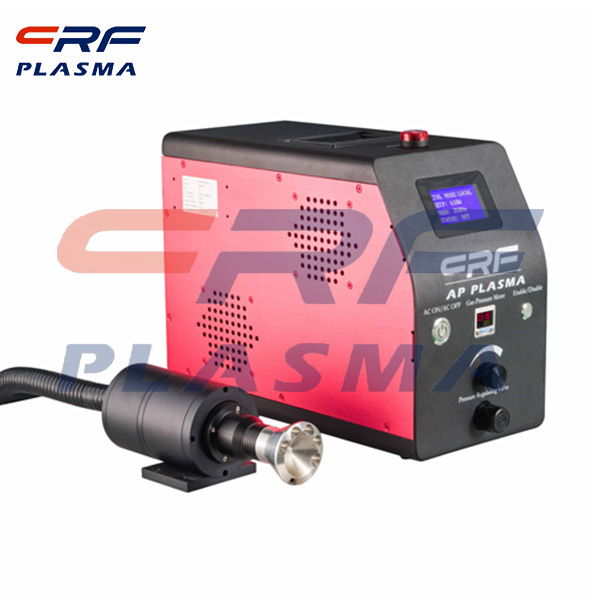
Scan the QR code to read on your phone

TEL:0755-3367 3020 / 0755-3367 3019

E-mail:sales-sfi@sfi-crf.com

ADD:Mabao Industrial Zone, Huangpu, Baoan District, Shenzhen







